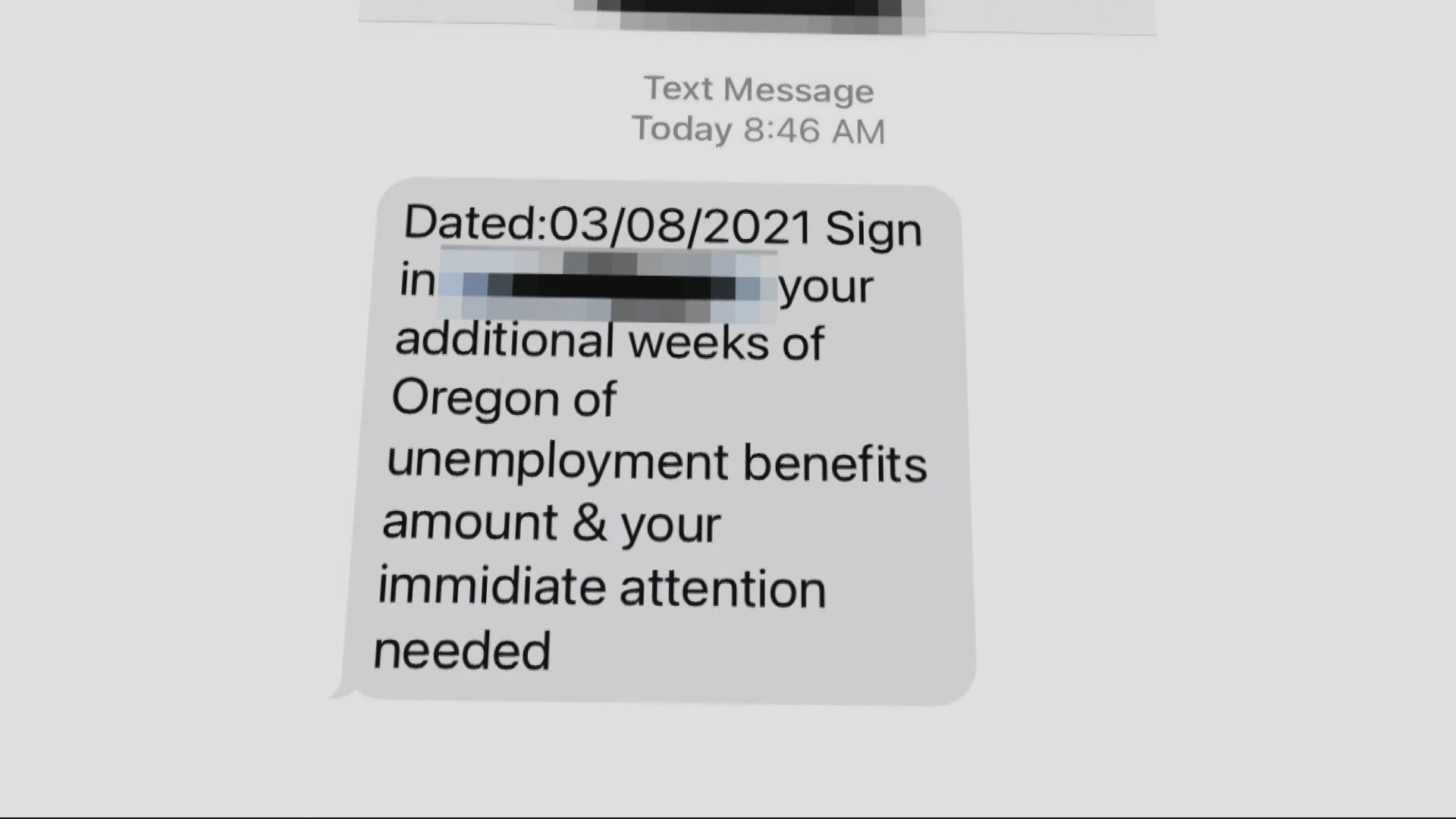PORTLAND, Oregon — Experts report the number of text message scams cybercrooks are sending has risen more than 300% since last summer. One reason is that victims continue to fall for the scams, clicking on accompanying links promising information about stimulus money, the vaccine or something else entirely.
“[The text] might say, 'Did you get all your stimulus money? Find out by clicking on this link.' Or, 'Learn more about your stimulus benefits here,'” warned Kerry Tomlinson, editor-in-chief at Archer News Network, a cyber security news organization.
Tomlinson said cybercrooks are playing on doubts and questions surrounding these critical topics. The texts often mention the recipients' state to make them seem more legitimate. Other messages will bait targets into clicking on links with keywords like "COVID," "stimulus" or "vaccine."
“[The links] will take them to a fake website, which will collect personal information,” said Tomlinson. “[Cybercrooks] will either directly use that information to use your money, or they'll sell it to someone else who can use it later to take your money.”
The Department of Justice recently warned of a huge increase in fake websites designed to look like bank or government pages.
So what to do if you get a scam text? First, recognize it. Be wary of any unsolicited text message from a phone number you don't know that contains a link. Some scam texts, but not all, may have misspelled words or poor grammar.
“You need to just avoid clicking on the link,” said Tomlinson.
She also cautioned not to reply to the text, just delete it. Tomlinson suggested you can also forward the text message to 7726, which spells out SPAM. That may flag wireless carriers that there's a problem.
Besides text messages, scammers are still sending phishing scams via email. Tomlinson said the same rules apply there: Don't click on any links. In some cases, doing so could download malware onto your device. When in doubt, do your own research about what the message is saying and call government agencies directly for answers.
“You may not get all the answers right away,” said Tomlinson, “But you sure as heck will not get any answers by clicking on the link in the fake message.”

